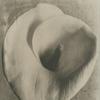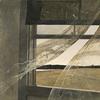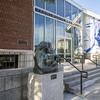The Morgan Thoroughly Explores Thoreau in Major Exhibition
- NEW YORK, New York
- /
- July 12, 2017
Henry David Thoreau (1817–1862) occupies a lofty place in American cultural history. He spent two years in a cabin by Walden Pond and a single night in jail, and out of those experiences grew two of this country’s most influential works: his book Walden and the essay known as “Civil Disobedience.” But his lifelong journal—more voluminous by far than his published writings—reveals a fuller, more intimate picture of a man of wide-ranging interests and a profound commitment to living responsibly and passionately. Now, in a major new exhibition entitled This Ever New Self: Thoreau and His Journal that opened June 2 at the Morgan Library & Museum, nearly one hundred items have been brought together in the most comprehensive exhibition ever devoted to the author.
Marking the 200th anniversary of his birth and organized in partnership with the Concord Museum in Thoreau’s hometown of Concord, Massachusetts, the show centers on the journal he kept throughout his life and its importance in understanding the essential Thoreau. More than twenty of Thoreau’s journal notebooks are shown along with letters and manuscripts, books from his library, pressed plants from his herbarium, and important personal artifacts. Also featured are the only two photographs for which he sat during his lifetime, shown together for the first time. The exhibition runs through September 10.
“Henry David Thoreau has variously been cast as naturalist, hermit philosopher, and political activist,” said Colin B. Bailey, director of the Morgan Library & Museum. “However, none of these labels do justice to the breadth of his interests and his enormous impact on American culture and letters. It is perhaps only in his journal that one finds Thoreau in full voice, commenting thoughtfully on a range of topics, from the seemingly mundane to the historic events of his day. The Morgan is pleased to partner with the Concord Museum in bringing this extraordinary exhibition to the public.”
“For the first time, the surviving personal artifacts—from Thoreau’s simple green desk to his beloved flute— will temporarily be on view outside of his hometown of Concord,” explained Margaret Burke, Executive Director of the Concord Museum. “Two centuries after his birth, we believe that much can be learned from Thoreau and his perception of the world. Throughout 2017, the Concord Museum is celebrating his Bicentennial with programs, events, gallery talks, and special exhibitions. We are particularly proud of our collaboration with the Morgan Library and that the exhibition will also be on view at the Concord Museum beginning September 29.”
Did Thoreau intend his journal to be read by the public? He repurposed and revised many passages during his lifetime and shared them in lectures and published writings. At the same time, the enterprise was deeply personal. “Says I to my-self should be the motto of my Journal,” he wrote in 1851. On view in the exhibition is his final entry, made in November 1861 after a violent rainstorm. He was paying attention, as he had done all his life, to ordinary details and seeing what conclusions he could draw. The second half of the notebook is empty. He died six months later. A contemporary work inspired by Thoreau’s journal incorporates a large-format photographic work by contemporary Cuban-born American artist Abelardo Morell, inspired by Thoreau’s Walden and his journal.












